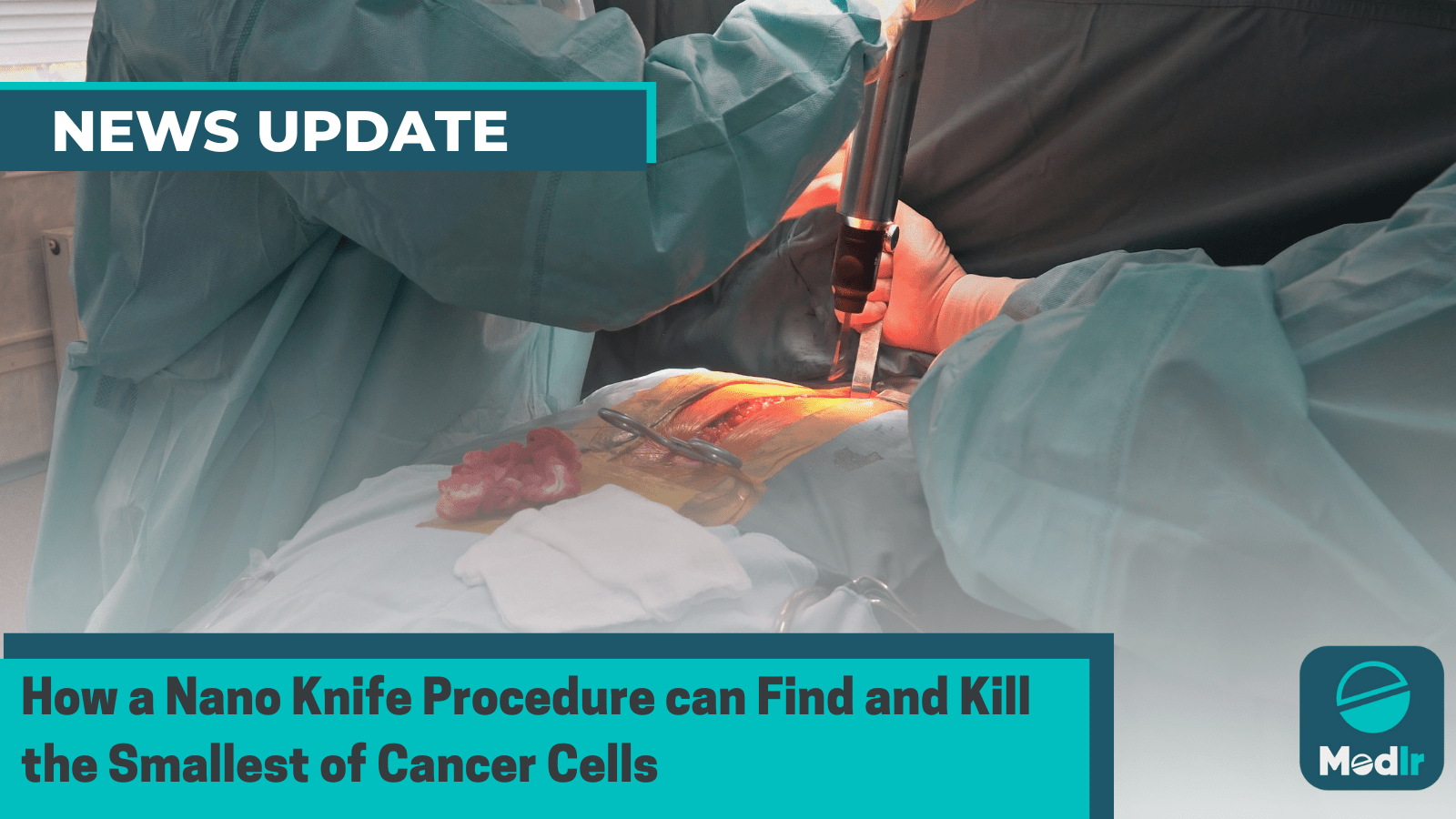How a Nano Knife Procedure can Find and Kill the Smallest of Cancer Cells
Written by Shaveta Arora
Nano Knife is a non-thermal ablative procedure that uses high voltage electricity to create tiny holes in cancer cells, leading to their destruction while sparing surrounding tissues.

When Kishan , a 57-year-old patient suffering from non-alcoholic steatohepatitis—a liver inflammation resulting from excessive fat accumulation in the organ—underwent a routine CT scan, he did not expect to be diagnosed with cancer. While conducting the scan, doctors at Medanta, Gurugram, identified a lesion in his kidneys, which later proved to be a malignant tumor.
This diagnosis came as a shock to Kishan since he had no prior symptoms of cancer. Initially, the doctors took a multi-disciplinary approach, with the urologist leading the treatment strategy as it was renal cancer. The treatment team comprised the urologists, the liver specialists responsible for managing his other co-morbidities, and the diagnostic and interventional radiology team.
The usual process is that surgeons perform an operation to remove cancer and ensure clean margins. However, in this instance, the urologists were hesitant to proceed with surgery for the renal cancer due to concerns about the patient's fitness to undergo a surgical procedure, given his chronic liver disease and associated ailments. Therefore, an alternative approach was required to manage the cancer. That's when they proposed using Nano Knife, a method that would completely ablate and destroy the cancer. Following the procedure, the patient's recovery has been excellent.
What is a Nano Knife? How Does it Work?
Dr. Sanjay Saran Baijal, Chairman of Diagnostic and Interventional Radiology at Medanta, explains that the procedure involves positioning a set of filaments around the cancer. He says -
“The needles are placed in or around a tumor. And then you have to pass very high voltage electricity between any two needles at a time. This process punctures very small holes into the cell membranes because of which the cells die while the peripheral tissues are left intact. Therefore, this has to be done with very accurate deployment of the needles. Since it is high voltage electricity, the procedure has to be done under full general anesthesia and the needles have to be placed with such absolute accuracy that you need imaging guidance. Hence ultrasound and CT scans are the imaging modalities that are used for deployment of the needles.”
What is the Eligibility Criteria for a Patient to have Nano Knife Procedure?
Dr. Baijal emphasizes that for the procedure, it is crucial for the patient to be in a condition suitable for general anesthesia. Additionally, it is preferred that the patient does not have a pacemaker implanted. "Because there will be so much electricity passing through, we don’t want any disturbance in the pacemaker function. But other than that, there is no other criteria because the nano knife allows surgeons to treat tumors which are otherwise very, very difficult to reach,” he says.
What are the Benefits of Nano Knife Procedure?
The significant benefit of using this technology is its ability to spare blood vessels. It operates with high precision and targets specifically. Even when blood vessels are located in close proximity to the tumor or sometimes even within it, they remain unharmed. According to reports, the success rate of this method has been approximately 95 percent.
Is Nano Knife Procedure used for a Specific Type of Tumor?
The device is specifically used for removing small tumors measuring up to 3 centimeters in size. Dr Baijal says -
“If you look at the worldwide usage of Nano Knife, you would find it mostly being used for treating pancreatic cancer, which we otherwise couldn’t because it was deemed surgically unresectable. It is also used in tumors of the liver and kidney.”
Diagnosing Pancreatic Cancer in its early stages, when it is more manageable, is challenging. Once it reaches Stage 3, the cancer becomes too advanced for surgical removal, increasing the risk of metastasis. However, in such cases, institutions in the West utilizing the Nano Knife have reported a nearly doubled life expectancy for Pancreatic Cancer patients.
Is Nano Knife Procedure better than Other Procedures?
Dr. Baijal explains that various ablative procedures can be conducted using needles, such as radiofrequency ablation, microwave ablation, or cryoablation. He adds -
“The first two require heating of the tissues and effectively burning them. The last one requires lowering the temperature and actually freezing the tumour to death. And a nano knife has the great ability of being non-thermal. It’s the passage of electricity which makes nano pores in the cell membrane that cause cell death while simultaneously sparing a lot of critical structures which might be in the vicinity.”
Resource - https://indianexpress.com/article/health-wellness/how-a-nano-knife-can-find-and-kill-the-smallest-of-cancer-cells-8819896/